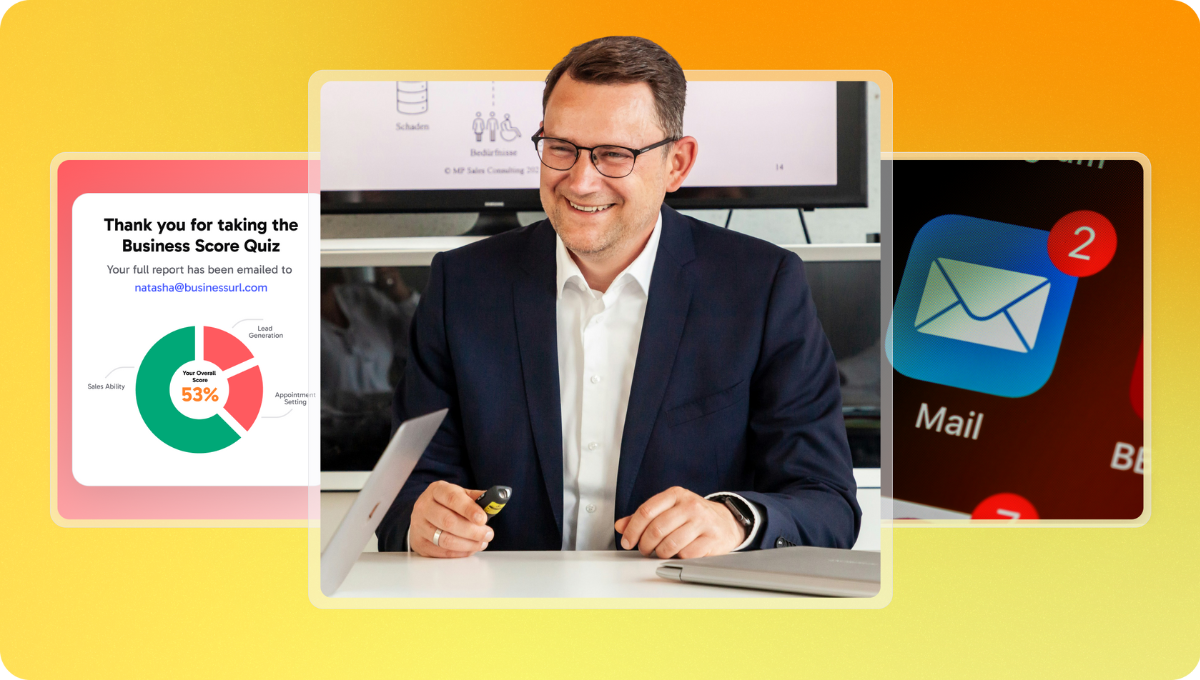Use the Power of Emotional Marketing To Connect with Clients


Your ideal customers are not robots, they’re people. They’re individuals with their own thoughts, views, experiences, and ideas. People with their own emotions. Because you’re trying to sell to people—these wonderfully complex and contradictory beings—you need to create a lasting emotional connection.
With people, it’s not always enough to present the facts and features of your product or go into detail about how it does the things it does. Instead, it’s much more effective to engage with leads on a deeper, more personal level using storytelling and the psychology of sales.
It’s all part of using emotional marketing, a piece of buyer psychology that is extremely powerful for building lasting client relationships.
What is emotional marketing?

There’s no trick to it. Emotional marketing is what you think it is—the practice of using and leaning on specific emotions to connect with leads. When you do it right, you can build long-term relationships with loyal customers.
By encouraging an emotional connection with your leads, you’re creating a relationship with people who are more likely to:
- Remember your brand thanks to the stronger impression emotional experiences leave.
- Engage with you because they’re invested in your brand. And thanks to their sense of inclusion, it makes them more likely to share and comment on your posts.
- Take the action you want them to. Whether it’s signing up to an email list, supporting a cause, or simply buying from you, emotional investment makes these decisions easier.
Using different emotions in your marketing will influence the audience in different ways. By understanding the impact of these emotions, you can create campaigns that inspire, reassure, or motivate customers.
All you need is an understanding of buyer psychology in marketing strategies and campaigns, and a little help from ScoreApp.
Why emotional marketing works

It’s not just your products and services that consumers are buying. They’re also buying into feelings, experiences, and stories. The ephemeral stuff that falls outside of how a product is made and what it’s made for. By using emotional marketing and storytelling, you’re making your brand more relatable. In turn, that makes your brand more shareable, and more likely to be interacted with. Used with an emotional marketing strategy that leans on the psychology of sales, it all adds up to help you stand out in what’s most likely a crowded market.
Emotional marketing has been shown to work time and again for some of the biggest brands. When done right, you can use emotions and the buyer psychology of purchase decisions to:
- Strengthen your brand identity – Putting an emphasis on particular emotions shapes the way people see your business.
- Increase customer loyalty – A loyal customer becomes a brand advocate over time, and buyer psychology helps build long-term relationships.
- Boost engagement to higher levels – When it comes to gathering shares, comments, and discussions, emotional content hits harder.
How emotions influence customer decisions

We experience different emotions every day, and the best emotional marketing knows how to hit them all. It’s not just about attaching positive feelings to your brand. There’s more to it than that.
Here are five emotions that can be used as part of the psychology of buying:
Happiness builds positivity and increases shareability
Okay, we’ll cover the obvious one first. By using uplifting content, stories, and language, brands such as Disney and Coca-Cola associate their products with familial connection, good times, and joy. Who doesn’t want some of that in their life?
Sadness inspires empathy and action
If Pixar movies have taught us anything, it’s that there’s a place for sadness. Charities rely on sadness to push us to do something about issues other people face. Whether it’s donating our time or money, a touch of sadness often gives us the push to make it happen.
Nostalgia draws on familiarity to be comforting
Reminding audiences of their carefree past, of a sense of wonder and fun, is a surefire way to connect to older audiences. Lego is great at reviving that sense of imagination and play from our childhood, as is gaming giant Nintendo.
Fear promotes urgency and a desire for risk prevention
Okay, so we’re not talking about horror-film levels of fear, here. More about acknowledging what the worst-case scenario could be, and how it would affect day-to-day life. Once audiences see what could happen, they’ll look to your solutions to avoid it. It’s basically how insurance and healthcare companies use buyer psychology.
Relief and easing pain often prove reassuring
If you can solve a problem—provide relief from a pain point—then you’re going to get your target audience on side. Having the solution and being able to remove irritation will leave customers relieved, happy, and coming back for more.
So, those are the most basic emotions for connecting more deeply with customers. But how do you use them? Well, ScoreApp is here to help with that.
How ScoreApp helps your customers feel their feelings

We know that getting to grips with buyer psychology, with the ways and means to influence leads and their emotions, can be a daunting challenge. That’s why ScoreApp’s products and features are all designed to make emotional marketing effortless.
Here are five ways you can harness emotions and the psychology of sales with ScoreApp.
1. Lead generation: Creating an emotional hook to drive action
Picture the scene: A financial advisor uses a ‘financial security scorecard’ to help users assess their savings and readiness for retirement.
The scorecard uses both fear and relief. The fear comes with highlighting gaps and risks in their current financial plan, while the relief follows a personalized roadmap created following a quiz that shows how to secure their future.
The emotional contrast between uncertainty and security is what motivates users to book a consultation. That’s why you need it for lead generation.
2. Customer research: Connecting through empathy and personal experience
Empathy and nostalgia pair well. Using a ‘parental stress scorecard’, a parenting coach can help parents measure their work–life balance. The scorecard uses empathy by acknowledging the struggles parents face, and understanding and validating their challenges.
Nostalgia can be woven into the content by reminding parents of their own childhood experiences, presenting a parallel or a goal for their parenting.
By tapping into these deeply personal experiences and feelings, the scorecard helps create a deeper connection and builds trust.
3. Sales qualification: Using urgency to drive conversions
It might feel uncomfortable using fear as part of buyer psychology in marketing, but it can be a powerful tool alongside urgency.
If a cybersecurity firm creates a scorecard to assess a business’s cyber risks, it’s using the gaps in a lead’s security—the fear of being a target—to draw them toward the solution.
At the same time, a low score makes users feel action is imperative. Together, both of these emotions increase the likelihood of conversions.
4. Client engagement and retention: Encouraging motivation and progress
A sense of achievement should never be underestimated, especially as it so often leads to happiness.
A fitness progress scorecard allows a personal trainer’s clients to measure how far they’ve come on their fitness journey. Positive changes and milestones become celebration points, giving clients that all-important sense of achievement.
When a client can see how far they’ve come, they’re even more likely to commit more time and effort to carry on progressing.
5. Product and service personalization: Making customers feel understood
It’s easy to build both trust and excitement with a scorecard, especially when it comes with personalized recommendations.
A skincare brand is a good example. When you include expert insights in tailored results, you create excitement through speaking to leads as individuals, understanding their issues, and responding personally. It’s that personal connection which builds trust in the brand and increases the likelihood of conversions. It’s a valuable way of leveraging the psychology of sales.
Emotion-driven scorecards convert better

Whichever emotion best suits your industry and goals, there’s no denying that emotional marketing has an impact. An interactive scorecard from ScoreApp helps you take a step further, letting customers and leads explore their own emotions and move toward a decision.
They do this because a scorecard that uses emotional marketing:
- Encourages self-reflection, with prospects recognizing and assessing their own emotional triggers and how they impact on purchasing choices
- Provides personalized insights and tailored feedback, which increases engagement and conversion rates
- Strengthens brand trust, with a well-designed scorecard demonstrating just how well you understand your audience.
By integrating emotional marketing into scorecards, businesses can create stronger connections, turning leads into customers more easily.
When you tap into the emotions that influence decision-making, you create a personalized, emotionally resonant experience that stays with the individual, and encourages them to stay with you.
That’s the power of emotional marketing, and of buyer psychology and ScoreApp working together.
ScoreApp is free to try, so you can start building your scorecard backed by emotional marketing today.



